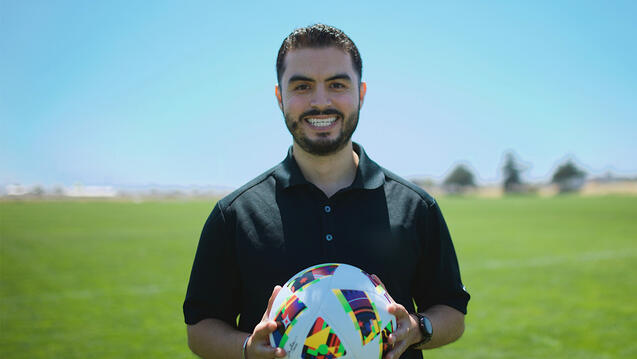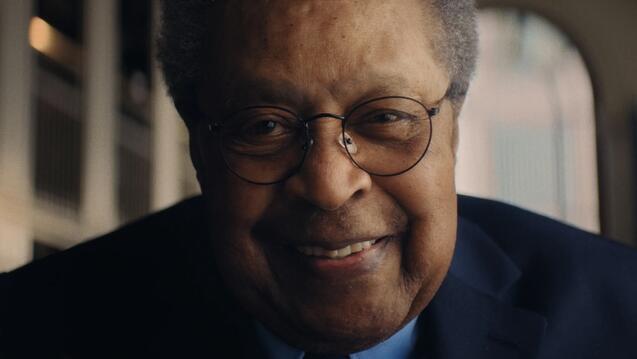Statement on the National Crisis
A “tipping point” describes an event or events that fundamentally and qualitatively change whatever has come before it. This seems to be an appropriate shorthand reference to the death of George Floyd in Minneapolis.
Following his arrest for the alleged use of a counterfeit $20 bill, Mr. Floyd, a black man, was pinned to the ground by a white police officer, facedown, his hands cuffed behind his back. For eight minutes, Mr. Floyd struggled to breathe under the weight of the officer’s knee on the back of his neck, during which time Mr. Floyd gasped for air and pleaded for his life to the officer and three colleagues who were watching. “I can’t breathe,” he gasped -- three words that were originally seared into our national conscience when they were repeated over and over by Eric Garner when he was killed by police under similar circumstances in July 2014.
Dr. Allecia M. Wilson of the University of Michigan and Michael Baden, a former New York City medical examiner, performed an autopsy on Mr. Floyd. “Not only was the knee on George’s neck a cause of his death, but so was the weight of the other two police officers on his back, who not only prevented blood flow into his brain but also air flow into his brain,” explained Antonio Romanucci, a lawyer for the surviving members of the Floyd family.
How many people of color are killed by police in the United States every year?
Following the killing of Eric Garner, Michael Brown, and other unarmed black men in 2014, The Washington Post published an investigative report demonstrating that FBI records had been underreporting fatal police shootings by more than half, and the Post began to record every fatal shooting by an on-duty police officer in the United States. On January 1, 2015, the Post designated a special investigative team to document and analyze every fatal shooting by an on-duty police officer in the country.
In a remarkably consistent pattern, the Post has documented the killing of approximately 1,000 people by police in each year since 2014, with numbers increasing almost every year (995 police killings in 2015; 963 in 2016; 987 in 2017; 998 in 2018; and 1003 in the past year). During this five-year period, the Post reported that 1,252 of the people killed by on-duty police officers were black. As documented by the Post:
Although half of the people shot and killed by police are white, black Americans are shot at a disproportionate rate. They account for less than 13 percent of the U.S. population, but are killed by police at more than twice the rate of white Americans. Hispanic Americans are also killed by police at a disproportionate rate.
These are the facts.
Nothing has changed in the five years since the Washington Post began documenting police killings.
Tragically, nothing has changed in my lifetime.
In the early 1960s, police violence against people of color triggered civil unrest and rioting in the African American and Latinx neighborhoods of cities throughout the United States, including Detroit, Los Angeles, Chicago, and Newark. In response, on July 28, 1967, President Johnson established The National Advisory Commission on Civil Disorders, chaired by Governor Otto Kerner of Illinois, to answer three questions about the uprisings that had spread across the nation: "What happened? Why did it happen? What can be done to prevent it from happening again and again?" The 11-member Kerner Commission published its report on February 29, 1968, concluding that:
Our nation is moving toward two societies, one black, one white—separate and unequal. To pursue our present course will involve the continuing polarization of the American community and, ultimately, the destruction of basic democratic values. Segregation and poverty have created in the racial ghetto a destructive environment totally unknown to most white Americans.
What white Americans have never fully understood—but what the Negro can never forget—is that white society is deeply implicated in the ghetto. White institutions created it, white institutions maintain, and white society condones it.
It is time to adopt strategies for action that will produce quick and visible progress. It is time to make good the promises of American democracy to all citizens—urban and rural, white and black, Spanish-surname, American Indian, and every minority group.
The Kerner Commission was correct in its diagnosis and its urgent call for radical action. The Commission Report called for greatly expanded social programs, including those against unemployment and low wages, poverty, inferior or inadequate education and training, lack of health care, and bad or nonexistent housing. “These programs will require unprecedented levels of funding.” The report also made strong recommendations to improve the conduct of the media and the police, as well as the hostile, toxic police-community relations that existed throughout the country.
Dr. Martin Luther King, Jr. called the Kerner Commission Report, "A physician's warning of approaching death, with a prescription for life."
The Kerner Commission told the nation the truth, and what actions needed to be taken to avert catastrophe. But nobody listened.
Just a few weeks after the Report’s publication, Dr. King was assassinated in Memphis, Tennessee. In the week following Dr. King’s murder, city after city in the United States went up in flames, in the largest mass civil unrest in the United States since the Civil War.
On March 3, 1991, Rodney King, a 25-year-old black man was beaten 33 times and kicked 7 times by Los Angeles police officers who arrested him. In a subsequent trial, the police officers were acquitted, sparking an outbreak of riots in LA and beyond.
The Movement for Black Lives began with the hashtag #BlackLivesMatter on social media after the acquittal of George Zimmerman in the vigilante killing of a black teenager, Trayvon Martin. The movement gained widespread national attention in the protests it mobilized following the killings by police of Michael Brown in Ferguson, Missouri and of Eric Garner in New York City.
The killings of Michael Brown and Eric Garner initiated efforts by the U.S. Justice Department to work out consent decrees with a small number of cities requiring comprehensive reform of police practices in their jurisdiction. Meanwhile, nationwide little, if anything, changed.
The Kerner Commission’s plea for top-to-bottom radical change was unheard and abandoned.
Here we are again, with the brutal murder of George Floyd in Minneapolis.
Our beloved Dr. King was killed at the age of 39.
I am now 89 years of age, blessed by longevity my dearest friend was denied.
In my long life, many tragic events are seared in my memory.
I remember and grieve the murder of Emmett Till in 1955, and the display of his disfigured body.
I remember and grieve the murder of Medgar Evers on June 12, 1963, just hours after President John F. Kennedy made his first major speech describing racial injustice as a “moral crisis” in our country.
I remember and grieve the killings of Addie Mae Collins, Carol Denise McNair, Carole Robertson, and Cynthia Wesley, victims of a bombing by the local KKK of the 16th Street Baptist Church in Birmingham, Alabama on September 15, 1963, and I will never forget the eulogy for the young girls Dr. King delivered to the Birmingham community.
I remember like yesterday the June 1964 killings of James Chaney, Andrew Goodman, and Michael Schwerner in Neshoba County, Mississippi. Dr. King asked me to represent him in reaching out to the parents of these young heroes of the movement, each killed because of his dedication to equal rights and justice. I’ve been very close to Andrew Goodman’s brother David since I met him in June 1964, and I still grieve for each young man.
I remember and grieve the murder of Jimmie Lee Jackson on February 18, 1965, an unarmed African American voting rights activist beaten by police and fatally shot by an Alabama state trooper at the outset of the Selma campaign.
I remember and grieve far too many young black men and women killed in recent years: Trayvon Martin, Michael Brown, Eric Garner, Breonna Taylor, Freddie Gray, Philando Castile, Alton Sterling, Sandra Bland, Laquan McDonald, Tamir Rice, and so many others.
Today once again I grieve. I grieve for the murder of George Floyd. I grieve for his family and for the city of Minneapolis. And I grieve for America, my country.
We witness murder after murder of black men and women in our nation by the police.
The Equal Justice Initiative, led by my dear brother Bryan Stevenson, has documented more than 4,400 racial terror lynchings in the United States during the period between Reconstruction and World War II.
The movement led by Dr. Martin Luther King, Jr., of which I am so honored to have been a part, led to the overthrow of the Jim Crow system in the former Confederate states.
This is an achievement of the highest magnitude, the greatest achievement in United States history since Reconstruction.
But the black freedom movement of the 1950s and 1960s is tragically incomplete.
In his iconic “I Have a Dream” speech, delivered on August 28, 1963 on the steps of the Lincoln Memorial to hundreds of thousands gathered for the March on Washington for Jobs and Freedom, Dr. King reminded the nation of the question that had relentlessly been asked of us:
“There are those who are asking the devotees of civil rights, ‘When will you be satisfied?’"
And Dr. King answered that question: “We can never be satisfied as long as the Negro is the victim of the unspeakable horrors of police brutality.”
In my life, I have seen great horrors and great achievements. In the nine decades I have lived, I have never seen a crisis as urgent and grave as the crisis facing our nation today.
Something has changed this time. The African American community has reached its limit.
We have come to the point where enough is enough.
We have come to a deep and widespread recognition, throughout communities of color and among white people of moral conscience, that we cannot be satisfied with the repeated pattern of racist violence by police officers against our people.
We cannot be satisfied by excuses and efforts to diminish the gravity of the systemic racism our community has carried decade after decade throughout the history of our country.
We cannot be satisfied by politicians and so-called thought leaders who blame the problem on a few “bad apples.”
We cannot be satisfied until this country faces the legacy of chattel slavery in an honest process of truth, reconciliation, and restorative justice.
We can never be satisfied as long as the Negro is the victim of the unspeakable horrors of police brutality.
As director of the USF Institute for Nonviolence and Social Justice, I join my colleagues in recognizing our responsibilities to realize the Jesuit mission of our university to carry forward the legacy of Dr. Martin Luther King, Jr. to new generations, and to be a force regionally and nationally to promote nonviolent struggle to ensure that the Kerner Commission’s “physician's warning of approaching death” is communicated with great clarity, and that the Kerner Report’s “prescription for life” is not abandoned but indeed applied with radical healing to our wounded society. This is why the University of San Francisco has made the USF Institute for Nonviolence and Social Justice a constitutive institute of the University, and why our university has given us its full support. Mindful of the unanticipated financial impact that the coronavirus has had on universities, colleges, and businesses throughout the country, what is taking place in our country at this time is a tipping point for our university.
More importantly, it is a tipping point for our city and state, and for our entire nation.
When Martin Luther King, Jr. spoke of “the fierce urgency of now,” he was not speaking in metaphorical terms. He was speaking about the reality of life and death.
The night before he was killed, Dr. King shared his final words with us, at the Mason Temple in Memphis.
“It is no longer a choice between violence and non-violence in this world,” he told us.
“It is non-violence or non-existence. That is where we are today.”
If not us, who? If not now, when?
Dr. Clarence B. Jones
Director, Institute for Nonviolence and Social Justice, University of San Francisco


